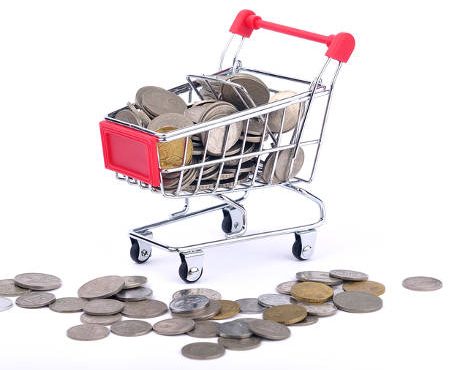Procter & Gamble Stock Is a Top Dividend Pick
Procter & Gamble Co (NYSE:PG) stock isn’t really an exciting name in today’s market, but if you held on to PG stock for the past 12 months, you would have made a 13.6% capital gain on top of its three-percent dividend yield.
Of course, there are companies with much higher dividend yields, and there are ones offering much bigger upside potentials. However, I believe Procter & Gamble is still one of the top dividend stocks in the market today and deserves a permanent spot in an income investor’s portfolio. Here’s why.
As dividend investors, it’s important to not just invest in the right company, but in the right industry as well. Some companies were creating massive shareholder value, but once their industry entered a downturn, they had to cut their payouts.
As an investor, you want to invest in an industry that is recession-proof. And Procter & Gamble is in one of those industries: consumer staples.
Take a look at the company’s products and you’ll see what I mean. With brands like “Tide,” “Bounty,” “Gillette,” “Crest,” and “Pampers,” PG stock could provide you with recession-proof income. People might not be buying as many new cars during a recession, but they’ll still be brushing their teeth and doing laundry, so PG’s products will always be in demand.
But there are quite a few companies in the consumer staples business, so what’s so special about PG stock?
Well, while the above products don’t seem that hard to make, convincing consumers to buy your laundry detergent rather than other brands on the shelf is not easy. Fortunately, Procter & Gamble has already convinced consumers around the world to buy its products. The company has 21 brands with annual sales of between $1.0 billion and $10.0 billion and 11 brands with sales of $500.0 million to $1.0 billion.
With established brands in a slow-changing industry, Procter & Gamble stock probably won’t shoot through the roof anytime soon. However, it also means that the company is in a position to return value to shareholders.
As a matter of fact, Procter & Gamble started doing that a long time ago. The company has been paying a dividend for 126 consecutive years, since its incorporation in 1890. Moreover, P&G has increased its dividend in each of the past 60 years. That makes PG stock a “dividend king,” a title bestowed on companies that have been increasing their payout for at least five decades.
Procter & Gamble is also buying back its shares. While PG stock investors don’t get a check every time the company repurchases its shares, buybacks reduce the number of shares outstanding. This means each share would be worth a greater percentage of the company. So without doing anything, each of the remaining shareholders will own a larger portion of the business.
In just last quarter alone, Procter & Gamble bought back $1.0 billion of its own shares in addition to paying $1.9 billion of dividends. For its entire fiscal 2017, the company plans to return $22.0 billion to shareholders through dividends and buybacks. (Source: “P&G Announces First Quarter Earnings,” Procter & Gamble Co, October 25, 2016.)
The best part is that despite being over a century old, Procter & Gamble is still growing. In the first quarter of the company’s fiscal 2017, which ended September 30, 2016, organic sales increased three percent year-over-year, driven by volume growth of three percent. P&G’s organic sales increased in all five business segments thanks to low- to mid-single-digit organic volume growth in all segments. Geographically, the company enjoyed growth in nine of its 10 top markets.
The Bottom Line on Procter & Gamble Stock
PG stock had a nice rally in the past 12 months, but thanks to its continued dividend increases, its dividend yield is still at an attractive 3.08%. Given the nature of the company’s business and the longevity of its brands, PG stock could keep rewarding income investors for decades to come.
